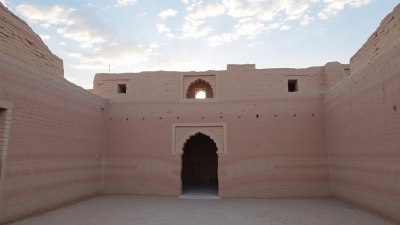Mysterious Ancient Petroglyphs and Their Hidden Meanings
Explore ancient petroglyphs, their history, and hidden meanings in this detailed article.

Mysterious ancient petroglyphs can be found sheltered in caves, carved on stone cliffs, or adorning rock faces across various landscapes around the globe. These ancient symbols often serve as a window into the cultural, spiritual, and social lives of our ancestors. As researchers and enthusiasts delve deeper into deciphering these enigmatic engravings, they unravel not just the meanings behind individual glyphs, but also the stories of the civilizations that created them. This article explores the different types of petroglyphs, their potential meanings, and the contexts in which they were created.
Understanding Petroglyphs
Petroglyphs are images or symbols that have been intentionally carved into rock surfaces by human hands. Unlike pictographs, which are painted onto surfaces, petroglyphs involve removing material from the rock, making them durable markers of human activity. The word 'petroglyph' comes from the Greek words 'petro' meaning rock and 'glyph' meaning carving. These carvings have been found in many regions worldwide, from North America to South America, Europe, Asia, and Africa, each bearing witness to the creativity and beliefs of different cultures.
Historical Context
The study of petroglyphs can be traced back to the early days of archaeology, with some of the earliest known petroglyphs dating back over 40,000 years. Found in sites such as the Bhimbetka rock shelters in India and the Chauvet Cave in France, these ancient artworks showcase the sophisticated social practices and spiritual lives of prehistoric peoples. Anthropologists believe that petroglyphs were created for various reasons, including rituals, communication, and preservation of history. In many cultures, these carvings were crucial for recording significant events, religious beliefs, and environmental knowledge, connecting present generations to their ancestors.
Cultural Significance
Different cultures attribute unique meanings to their petroglyphs. For instance, Native American tribes use petroglyphs to represent creatures important in their mythology, symbolizing powerful spiritual guides. In this context, the carvings not only reflect the fauna of the region but also convey messages to future generations regarding the importance of nature. Similarly, the petroglyphs of the Indigenous people of the Andes often symbolize their connection to the earth and the cosmos, with many glyphs aligned to celestial events that dictated agricultural cycles.
Methods of Creation
The methods used to create these ancient carvings vary depending on the tools available and the materials used. Early humans primarily utilized hard tools made of stone, bone, or metal to chip away at softer rock surfaces. Techniques included pecking, scratching, and grinding to achieve desired designs. As technology progressed, more diverse tools were employed, allowing for greater detail and complexity in the petroglyphs. Recent studies have begun to utilize modern technologies like digital mapping to create a more comprehensive understanding of the distribution and variation in petroglyph styles.
Interpreting the Glyphs
Interpreting ancient petroglyphs is a complex task, often requiring a multidisciplinary approach. Historians, anthropologists, and art historians collaborate to analyze petroglyphs within their archaeological context. Tools such as carbon dating help establish timelines, while ethnographic studies can provide insight into the cultural practices of contemporary societies that may still hold beliefs linked to these carvings. However, many glyphs remain challenging to interpret due to their abstract nature, leading to multiple interpretations layered with folklore and myth.
Major Sites Around the World
Numerous significant sites across the globe boast impressive collections of petroglyphs. In North America, the petroglyphs found in the Utah's Nine Mile Canyon and those at the El Morro National Monument in New Mexico showcase the region's rich Indigenous history. In South America, the Nazca Lines in Peru, a series of geoglyphs etched into desert earth, demonstrate the vast capabilities of ancient peoples. Meanwhile, the Tanum Rock Carvings in Sweden, which were inscribed between 1500 BCE and 500 CE, display intricate depictions of daily life, hunting, and religious practices.
Mystical and Spiritual Interpretations
Many cultures ascribed mystical or spiritual meanings to petroglyphs, often viewing them as connections to the divine. For Native Americans, petroglyphs could hold the power to summon ancestors' spirits, serving as mediators between the living and the spiritual realm. Similarly, in Celtic traditions, stones featuring carvings were often seen as sacred portals to other worlds, holding secrets of the past waiting to be unlocked by future generations. Such interpretations indicate that these carvings were not merely artistic expressions but sacred symbols deeply ingrained in cultural practices.
Modern Implications
Today, ancient petroglyphs serve not only as historical artifacts but also as reminders of the need for cultural preservation. As urbanization expands and landscapes modernize, many petroglyph sites face threats from natural erosion, vandalism, and climate change. Recognizing the importance of these symbols in understanding our shared humanity, various conservation efforts aim to protect and preserve these historic sites for future generations. Collaborative projects between Indigenous communities, archaeologists, and local governments seek to foster greater appreciation for these cultural treasures.
Ethical Considerations
With the rising interest in ancient petroglyphs comes the responsibility to approach them ethically. This includes recognizing the Indigenous rights regarding the documentation and interpretation of their cultural heritage. Engaging with local communities and respecting their traditions are essential components of responsible archaeological practice. Researchers often advocate for the inclusion of Indigenous perspectives in understanding petroglyphs, as they provide contextual knowledge that outsiders may overlook. Collaboration helps create a more comprehensive narrative surrounding these ancient symbols and their significance.
The study of mysterious ancient petroglyphs offers invaluable insights into the beliefs, practices, and lives of prehistoric peoples. As conduits of history and culture etched in stone, these carvings remind us of humanity's enduring quest for expression and understanding. By appreciating and protecting these irreplaceable artifacts, we honor the legacies of those who walked the earth long before us, allowing their stories to resonate through time.











